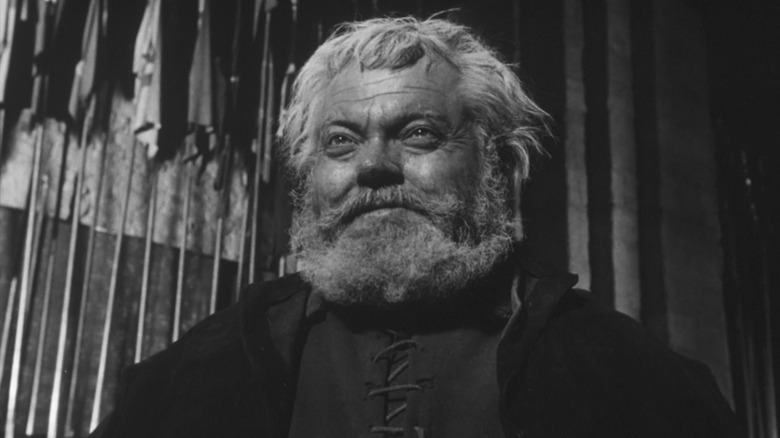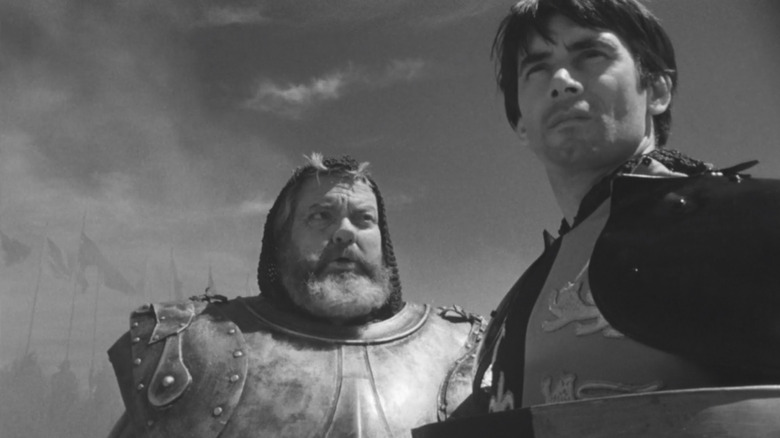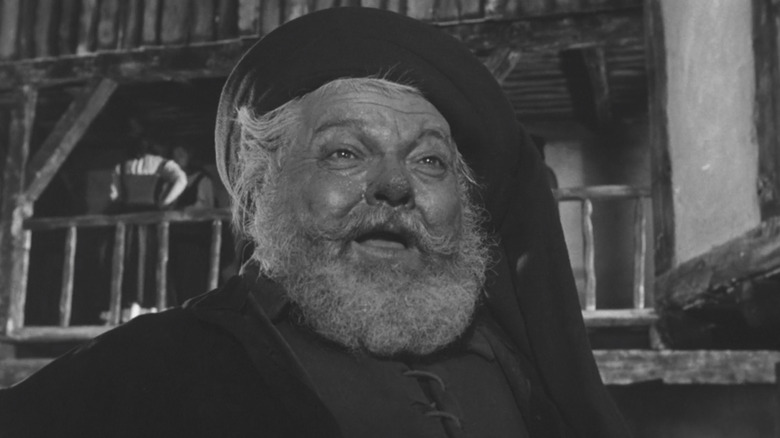The Daily Stream: Orson Welles Finds The Soul Of Falstaff In Chimes At Midnight
(Welcome to The Daily Stream, an ongoing series in which the /Film team shares what they've been watching, why it's worth checking out, and where you can stream it.)
The Movie: "Chimes at Midnight"
Where You Can Stream It: HBO Max, Criterion Channel
The Pitch: Sir John Falstaff has long been one of William Shakespeare's most beloved characters. The brash, gluttonous soldier who pals around with the young Prince Hal in "Henry IV Parts I & II" is one of the Bard's greatest clowns and, if played correctly, souls. Though he is a supporting character in those works, Orson Welles decided to reconfigure the two plays, along with material from "Richard II," "Henry V," and "The Merry Wives of Windsor," to focus the story on Falstaff, who Welles also portrays. "Chimes at Midnight" serves as another entry into the stellar filmography of the legendary filmmaker, creating a beautiful film of friendship and betrayal. Shot with unbridled kinetic energy in glorious black and white, Welles transforms what could so easily be staid, stage-bound drama into full cinematic glory, and as an actor, he gives the performance of a lifetime, channeling a lifetime of revelry and regret into every single gesture, line reading, and facial expression. "Citizen Kane" may be the arguably greatest film of all time, but "Chimes at Midnight" is not too far behind it.
Why it's essential viewing
The second half of Orson Welles' career is filled with fascinating experiments, from the essay documentary "F for Fake" to the meta Hollywood satire "The Other Side of the Wind" that was completed decades after his death. He was a filmmaker who was imposed with stricter and stricter limitations as he got older yet always found innovative ways to create tremendous pictures. "Chimes at Midnight" was made during the period when Welles was working far outside the Hollywood system. He was off in Europe, collecting every cent he could from any investor who would talk to him. The production of the film even had to stop partway through because they ran out of money, and Welles had to go hustle for some more.
While some would see their lack of resources as a hindrance, Welles always found innovative ways to turn his limitations into a benefit. His gift for framing has never been in question, but "Chimes at Midnight" adds in a rough and tumble camera that is in near-constant motion. It makes every scene feel alive and propulsive. The editing matches that propulsion with quick cutting that feels of a pace of the films of today rather than the mid-1960s. No place is this modernity more apparent than in the rendering of the Battle of Shrewsberry. It is a frenetic, brutal, breathtaking sequence that feels like it was ripped from a modern $150 million blockbuster yet retains all the potent character drama Welles handles perfectly. Not to mention it features the unbelievably hilarious image of the immensely corpulent Welles as Falstaff running around the battle.
One thing that is beautiful about the image of Orson Welles as Falstaff is he is fully aware of his size and knows how to accentuate it. He knows that draping him in armor is funny or how the image of him barreling down small, cramped hallways adds some ineffable energy to his introductory scene. Plus, he juxtaposes himself against the slighter than slight Kirk Baxter as Prince Hal, giving Falstaff the power in the relationship. By the end, he is able to somehow make Hal seem massive and Falstaff microscopic when the final turn of betrayal sets in, which Welles plays with equal parts heartbreak and pride.
The challenges of adapting Shakespeare
While the plays of William Shakespeare are some of the most adapted works in the entire history cinema, rarely are they ever done well. Translating anything written for the stage presents a lot of challenges, but Shakespeare comes with the additional hangups of the overtly poetic language and hundreds of years of traditional performances with so many theatre professionals forming so many preconceived notions about the material. Shakespeare often gets the reputation on film for being homework, an airless concoction of pomposity where the actors love making a meal out of every line of dialogue. Those adaptations do exist, and even worse are the adaptations where they pile in a bunch of famous people who have no experience with Shakespeare and basically read the lines as if they learned a foreign language phonetically.
However, if you hire skilled performers who can live and breathe the language, filmmakers like Franco Zeffirelli, Kenneth Branagh, and, naturally, Orson Welles know how to take that and turn it into cinema. The focus of a line reading should not be on the aesthetic beauty of the words being spoken. Yes, the language isn't naturalistic, but it serves the same dramatic purposes that the words of any other writer do. Clarity and immediacy are the names of the game. If everyone working on the film is on the same page with those two attributes, you can focus your attention on how to translate scenes to the screen rather than all the focus is on the words.
"Chimes at Midnight," along with Zeffirelli's "Romeo and Juliet" and Branagh's "Much Ado About Nothing," understands this better than any other William Shakespeare adaption. Orson Welles and his company understand the material of these five plays so thoroughly that it never feels like anyone is working hard to make the words work. On top of that baseline, Welles is able to build a thrilling story of war and brotherhood that just so happens to have everyone speaking Shakespearean verse. "Chimes at Midnight" is a triumph of adaptation and boldness from one of the medium's great masters, and for so long, the film had been unavailable to see in any form. Now, it's available at the click of a button. Do yourself a favor and click it.


